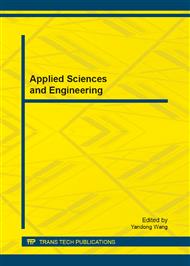p.372
p.376
p.381
p.386
p.391
p.396
p.401
p.409
p.415
Thermal-Conditioned Braking Torque Control for Modern Wind Turbines
Abstract:
A new soft-braking strategy for modern Wind Turbines (WTs) is proposed. The braking torque is directly controlled by regulating the caliper’s hydraulic pressure via a controllable pressure valve, subject to some thermal constraints about mechanic braking units. The proposed control strategy consists of a pressure controller, a braking controller and an optimization algorithm for generating a braking torque reference. The modeling issues and some of these design/developments based on a lab-sized setup are discussed. Comparing with the existing WT braking solutions, either through an on/off control, or through some soft-braking mechanism which mainly employs a kind of generator-shaft speed control, the proposed approach can control the brake-induced mechanic stress to the transmission system in a more effective manner, and meanwhile, the thermal stress to the braking units is also explicitly cooperated into this design.
Info:
Periodical:
Pages:
391-395
Citation:
Online since:
September 2012
Authors:
Price:
Сopyright:
© 2012 Trans Tech Publications Ltd. All Rights Reserved
Share:
Citation:


